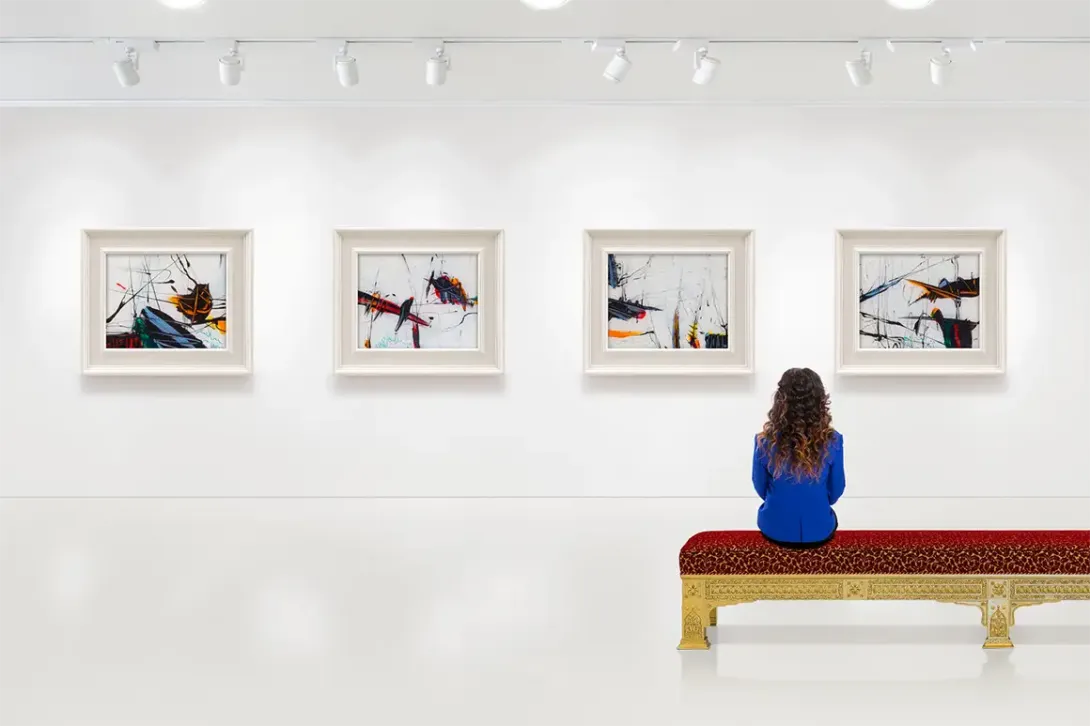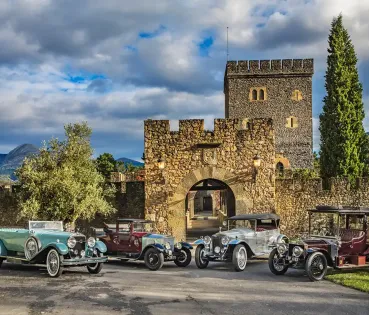
Six works of art lost throughout history
Wars, thefts, fires and deliberate destruction have led to the disappearance of some outstanding works of art. These six pieces, currently lost, remain an obsession for collectors and historians.
Just as there are silences that are more eloquent than many speeches, there are works of art whose value is enhanced when they disappear. The value of the lost, the unique and the unobtainable triggers a voracious appetite in collectors. And the fact is that behind every lost work of art there is a story that goes far beyond its brushstrokes: that of the genius who created it, that of the historical moment that destroyed it and that of the experts and collectors who still dream of recovering it. The history of art isn’t just a matter of paintings, it is also constituted by the silences, gaps and absences that kindle the imagination and feed the desire for discovery.
Some of these pieces may be hidden in private collections, others probably no longer exist. But they all share one thing: the mythical aura that their absence bestows upon them. Among the thousands of works that we will never be able to recover, we have selected six lost masterpieces that made history and whose disappearance still lingers.
1. ‘The Expulsion of the Moriscos’, Diego Velázquez (c. 1627)
Commissioned by King Philip IV for the Hall of Realms of the Buen Retiro Palace, this historical work by Velázquez was considered one of the most important of his early years as a court painter. It was destroyed during the fire at the Alcázar Palace in Madrid on Christmas Eve 1734, when more than 500 works of art were lost, including other creations by the Sevillian master.
This painting depicted the order of expulsion of the moriscos (baptised Spanish moors) from the Crown of Aragon, issued in 1609 by Philip III, one of the most important moments of the modern era of Iberian history. Although this event has been described and depicted elsewhere, Velázquez's portrayal, which was notable for its use of composition, has been lost forever in the sea of time.
2. ‘The Storm on the Sea of Galilee’, Rembrandt (1633)
This spectacular scene of a roiling sea was stolen in 1990 from the Isabella Stewart Gardner Museum in Boston, in one of the largest art heists that still remains to be solved. The Storm on the Sea of Galilee is the only marine scene painted by Rembrandt and shows the apostles battling the storm while Christ sleeps.
This painting is a masterful example of the artist's use of chiaroscuro, giving the scene unique drama and sense of motion.
Its current whereabouts remain a mystery, and the museum preserves its empty frame as a symbol of loss and hope that it will one day be recovered. Its disappearance isn’t just a material loss, but also a scar in the cultural and artistic legacy of humanity.
3. ‘The Nativity with Saint Francis and Saint Lawrence’, Caravaggio (1609)
Stolen from a church in Palermo in 1969, The Nativity with St Francis and St Lawrence by Caravaggio is one of the most mysterious and sought-after works in the art world. The Sicilian mafia is connected to its disappearance, and some informants claim that it was accidentally destroyed. In any case, its whereabouts remain a mystery and the subject of speculation.
This masterpiece, painted in 1609, is one of Caravaggio's last creations before his death. The painting presents the birth of Jesus with an intensely dramatic atmosphere, characteristic of the artist's style, in which the use of chiaroscuro heightened the emotional depth of the scene. The disappearance of this work represents the loss of a key piece in the understanding of Caravaggio's creative genius.
Over the years, a number of theories have been suggested regarding the painting's fate. Some believe that it was sold on the art black market, while others believe that it may have been accidentally destroyed. Documentaries and books have explored the history of this lost work, attempting to shed light on its ultimate fate.
4. ‘Portrait of a Young Man’, Raphael (c. 1513-1514)
Possibly a self-portrait by Raphael, this Renaissance painting was looted by the Nazis during World War II. Originally in the collection of the Czartoryski Museum in Kraków, Poland, it was lost after being moved to Germany. Over the years, there have been various rumours about its possible presence in private collections, but its location has never been confirmed.
The Portrait of a Young Man is an important example of Raphael's mastery, displaying his ability to capture the essence and emotions of the subject with impressive precision.
The search for this painting has been the subject of much research and speculation. Art historians and amateur detectives have attempted to trace its whereabouts, fuelling the hope that it might one day be recovered and returned to its place of origin. Its story is a reminder of the ravages of war on cultural heritage and the importance of preserving and protecting works of art for future generations.
5. ‘The Concert’, Johannes Vermeer (c. 1664)
Another victim of the Isabella Stewart Gardner Museum theft. The Concert, by Johannes Vermeer, is one of the most valuable and sought-after works in the art world. This painting of an intimate musical scene in which three figures play instruments and sing in a home, has reached an estimated value of more than 200 million euros. The rarity of Vermeer paintings - there are no more than 36 in the world - makes this loss especially significant. Its serene atmosphere, masterful use of light and balanced composition made it a centrepiece of the museum's collection.
The theft, which occurred in the early hours of March 18th 1990, was one of the most important in the history of art. Two men disguised as policemen managed to trick the museum's guards, broke in and stole thirteen pieces of art, including The Concert. Despite numerous investigations and theories about their whereabouts, the fate of these works remains a mystery.
The disappearance of The Concert is not only an economic and artistic loss, but also a blow to the cultural legacy of humanity. Vermeer's masterpiece, with its impeccable technique and ability to portray intimacy and light, is irreplaceable.
6. ‘Portrait of Winston Churchill’, Graham Sutherland (1954)
Commissioned by the British Parliament, this portrait was presented to Winston Churchill on his 80th birthday. The work, by the renowned artist Graham Sutherland, was seen as a realistic and crude depiction of the statesman. However, both Churchill and his wife, Clementine, found it distasteful and unflattering, considering it a cruel caricature.
The portrait was intended for public display, but Churchill refused to allow it to be shown. The Churchills' dislike of the painting was so strong that, as was revealed decades later, Clementine decided to secretly destroy it. In 1978, it was confirmed that the portrait had been burned at Chartwell, the Churchills' home, to prevent any possible future display.
Despite the destruction of the painting, the legacy of this painting persists. Sketches and photographs of the portrait survive and give art historians and the general public a glimpse of Sutherland's original vision. The story of the Portrait of Winston Churchill is an example of how perception and emotion can influence the fate of a work of art and adds a layer of complexity to the way we appreciate and preserve cultural heritage.
As we can see, the disappearance and destruction of these masterpieces highlights the importance of preserving and protecting cultural heritage. Each lost or destroyed work represents not just an economic and artistic loss, but also a void in the history and legacy of humanity. The immeasurable value of these pieces to the collectors around the world lies not only in their uniqueness and beauty, but also in the stories and emotions they trigger. The history of these pieces reminds us that art is fragile and precious, and that it is everyone's responsibility to ensure that future generations can enjoy and learn from these priceless expressions of human creativity.




